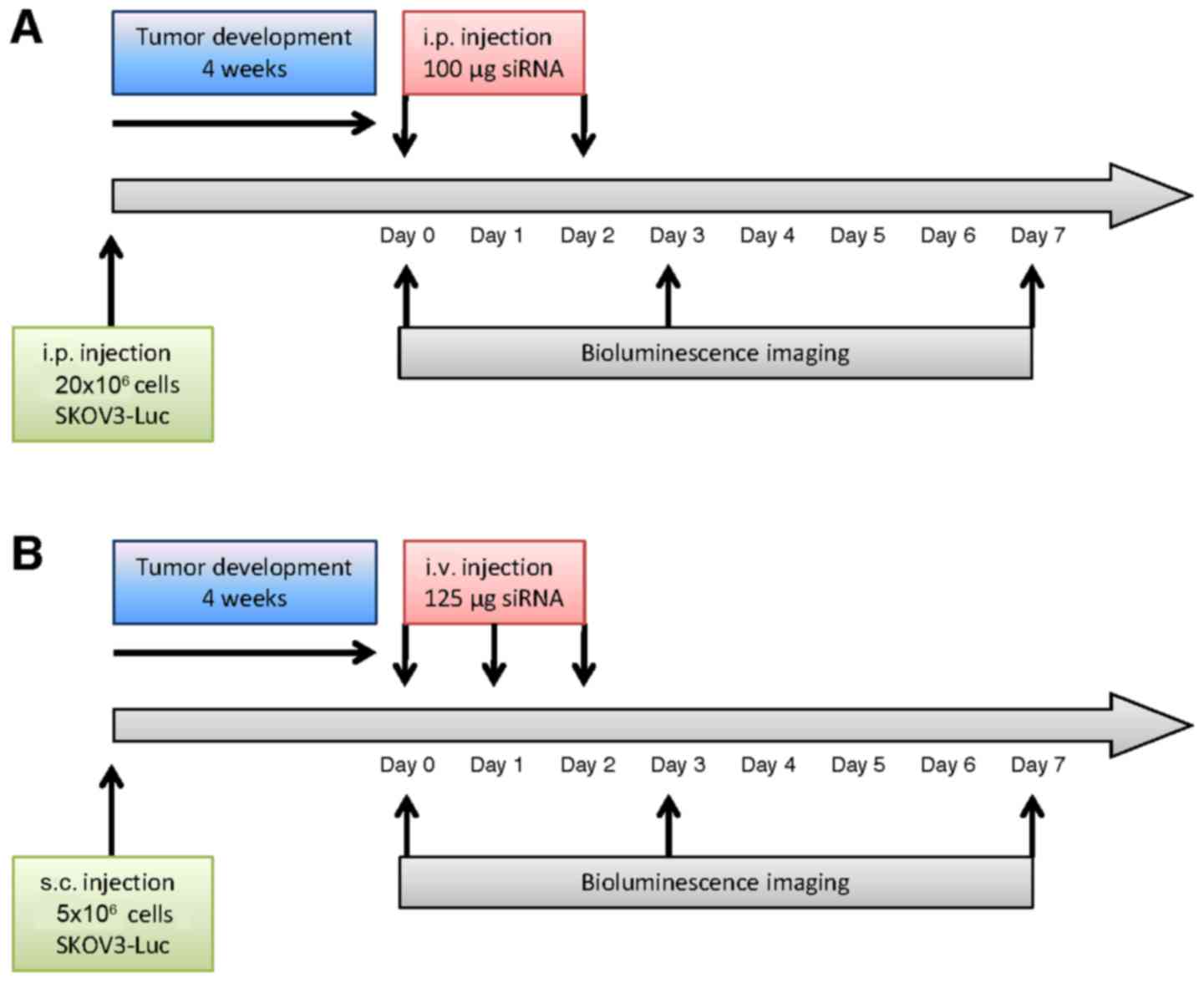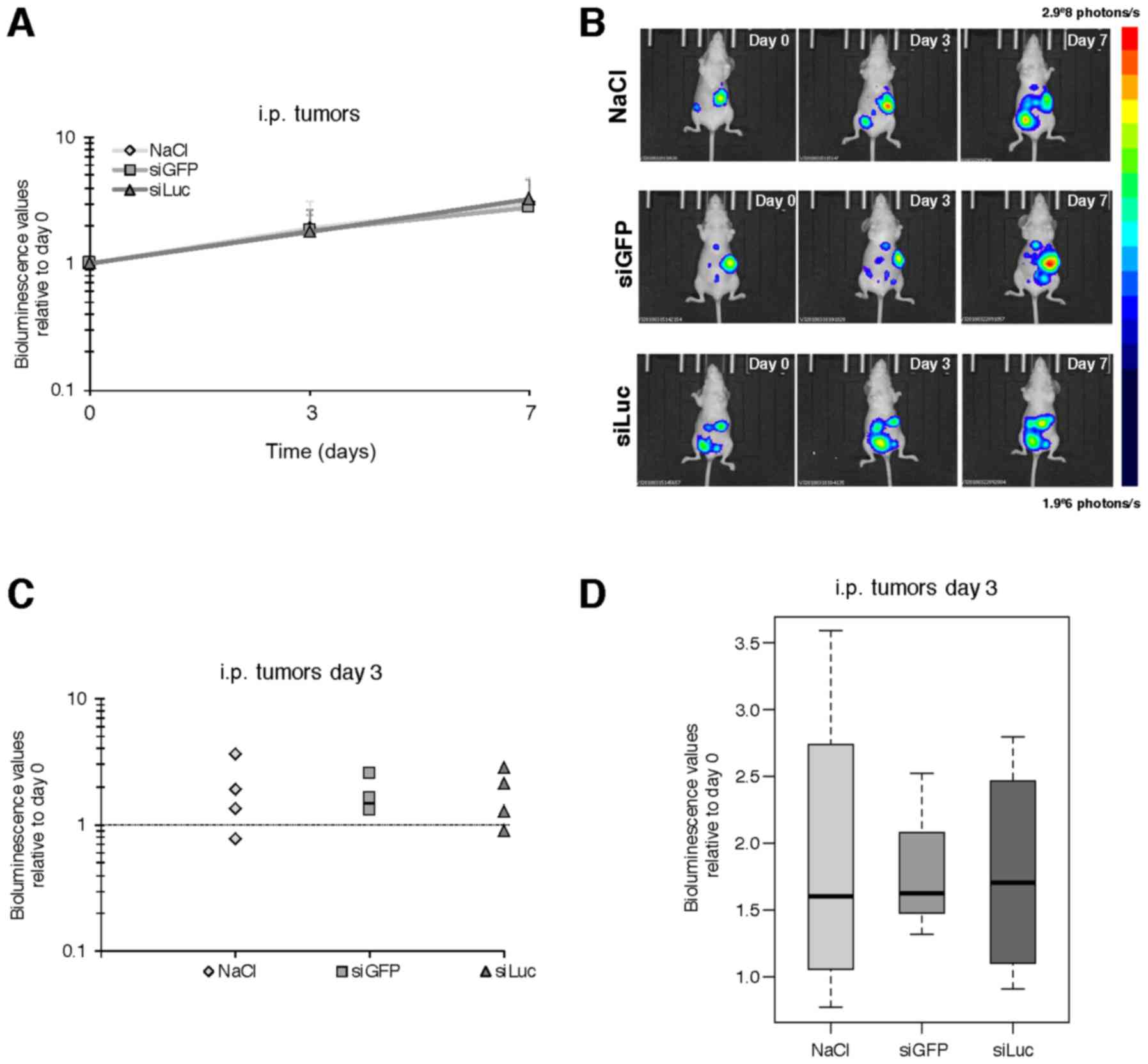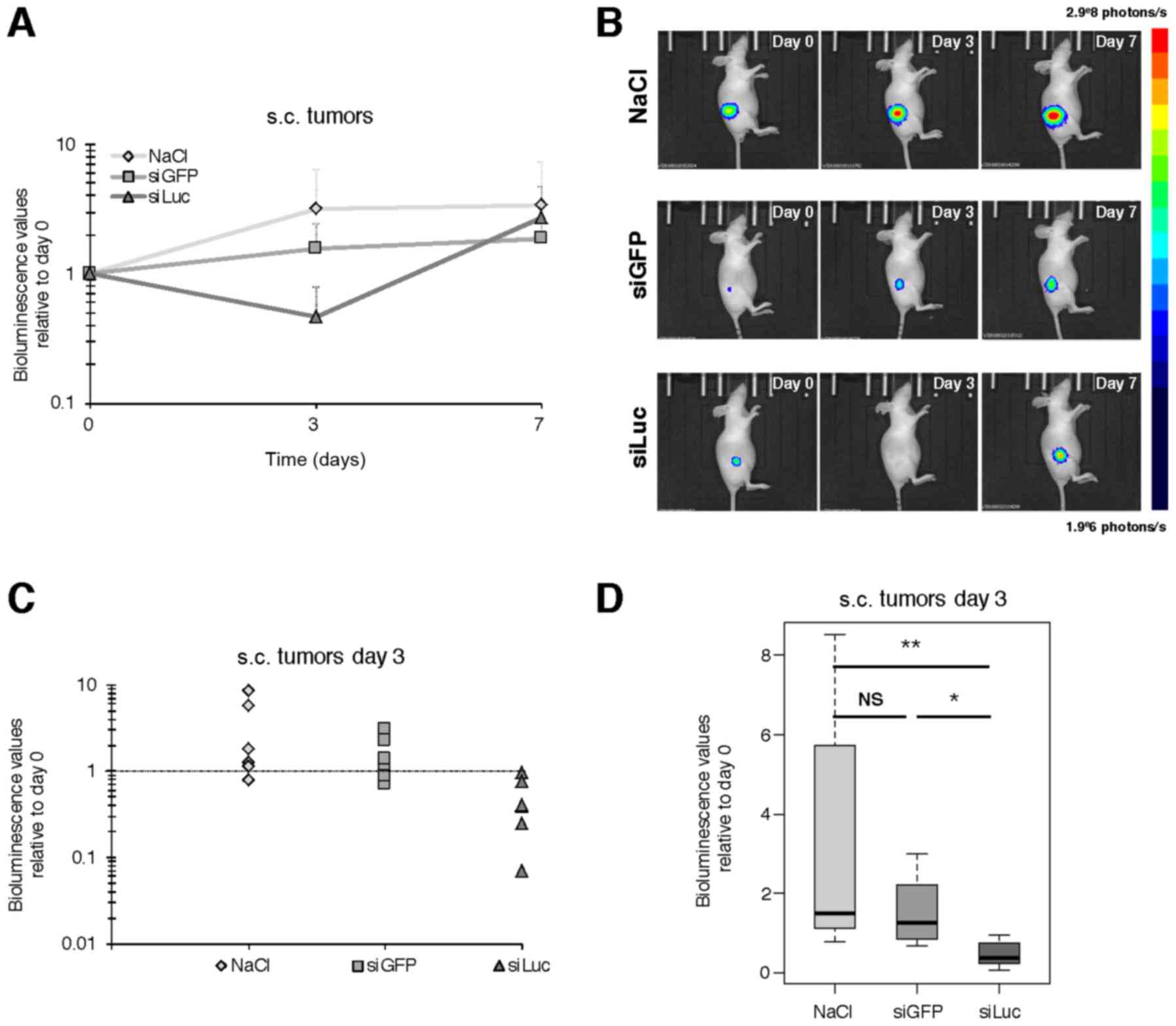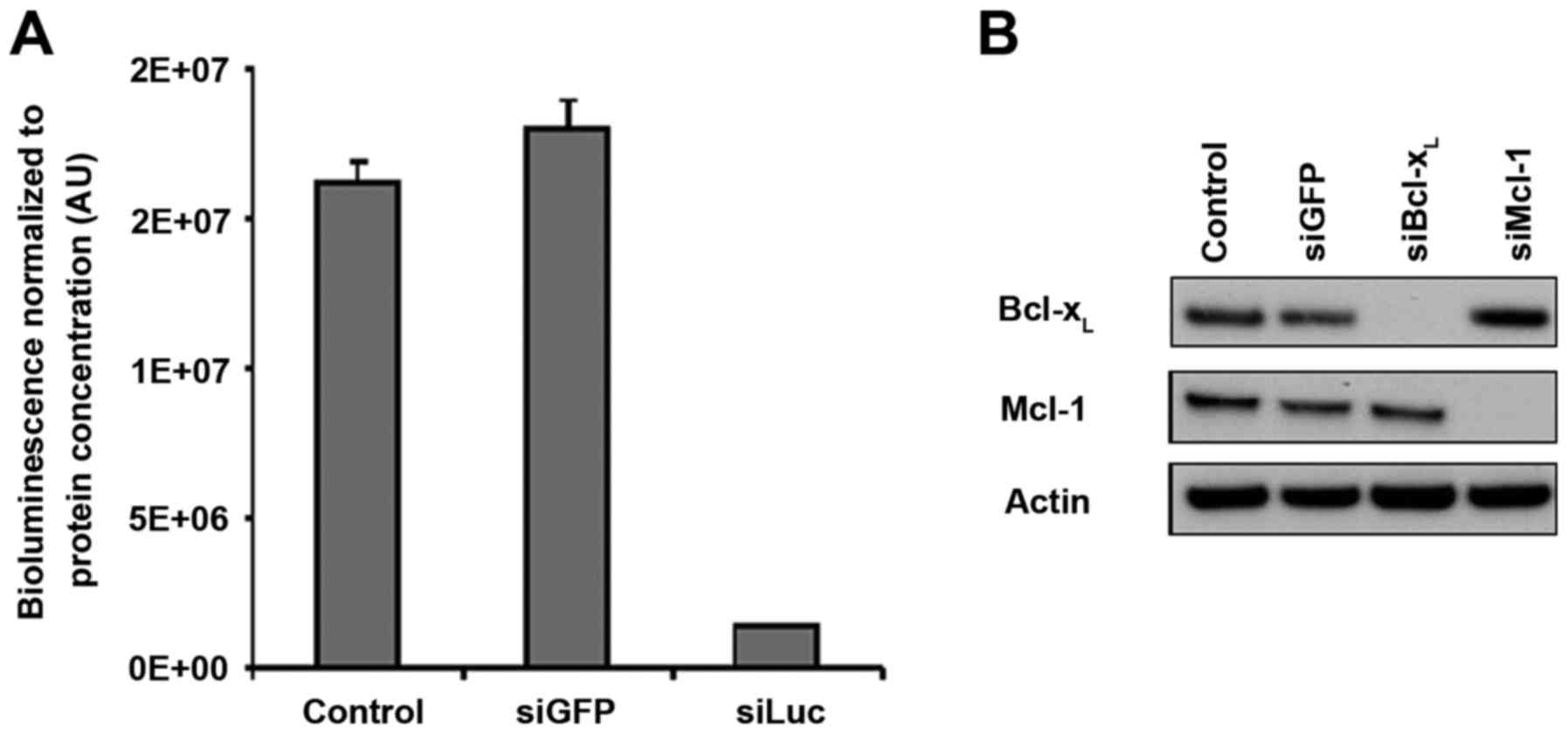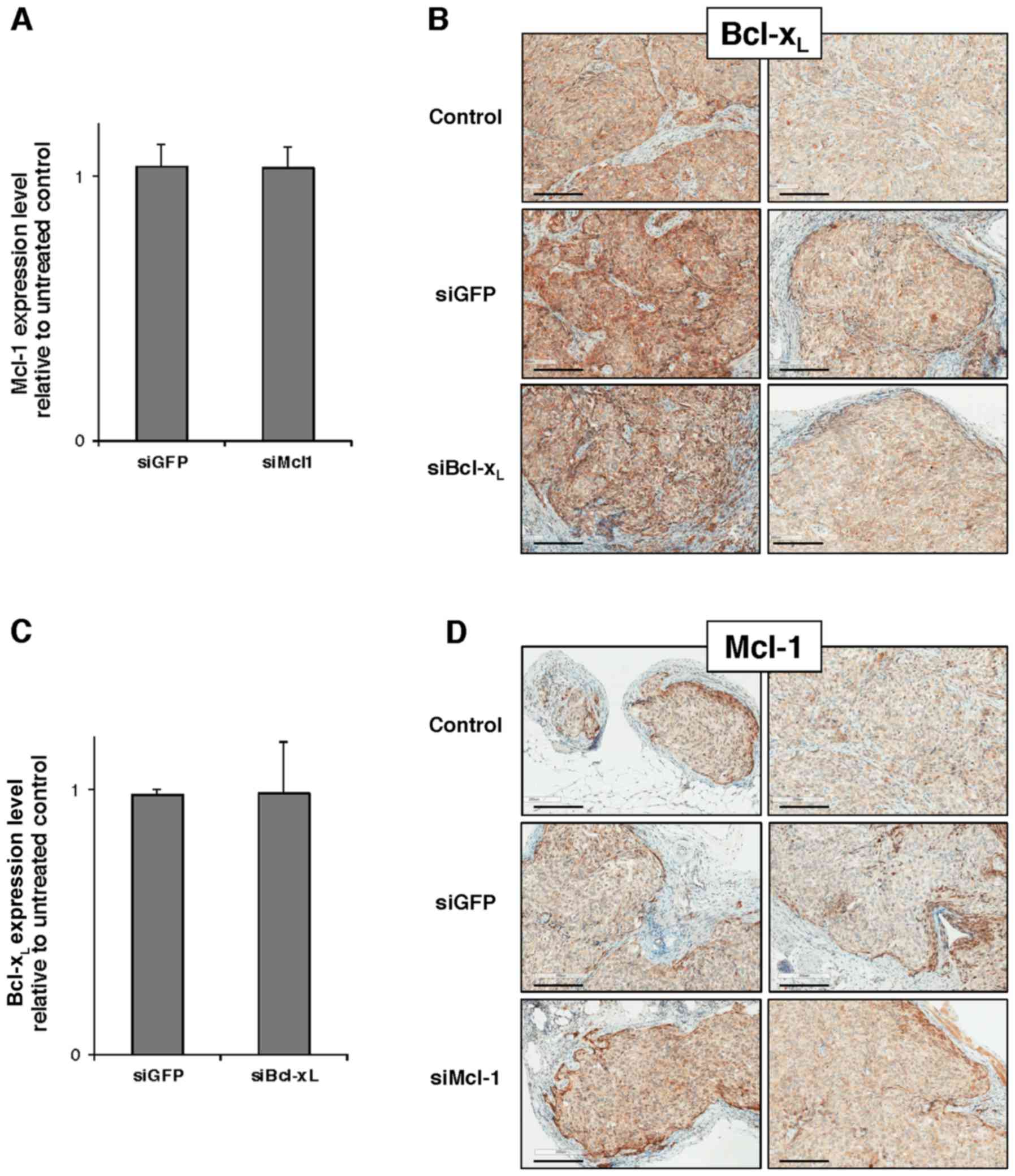|
1
|
Villedieu M, Louis MH, Dutoit S, Brotin E,
Lincet H, Duigou F, Staedel C, Gauduchon P and Poulain L: Absence
of Bcl-xL down-regulation in response to cisplatin is
associated with chemoresistance in ovarian carcinoma cells. Gynecol
Oncol. 105:31–44. 2007. View Article : Google Scholar : PubMed/NCBI
|
|
2
|
Tomasina J, Malzert-Freon A, Giffard F,
Brotin E, Louis MH, Abeilard E, Rault S, Gauduchon P and Poulain L:
Sensitization of ovarian carcinoma cells to
Bcl-xL-targeting strategies through indirect modulation
of Mcl-1 activity by MR22388, a molecule of the tripentone family.
J Ovarian Res. 6:38–2013. 2013. View Article : Google Scholar : PubMed/NCBI
|
|
3
|
Brotin E, Meryet-Figuière M, Simonin K,
Duval RE, Villedieu M, Leroy-Dudal J, Saison-Behmoaras E, Gauduchon
P, Denoyelle C and Poulain L: Bcl-XL and MCL-1
constitute pertinent targets in ovarian carcinoma and their
concomitant inhibition is sufficient to induce apoptosis. Int J
Cancer. 126:885–895. 2010.PubMed/NCBI
|
|
4
|
Varin E, Denoyelle C, Brotin E,
Meryet-Figuière M, Giffard F, Abeilard E, Goux D, Gauduchon P,
Icard P and Poulain L: Downregulation of Bcl-xL and Mcl-1 is
sufficient to induce cell death in mesothelioma cells highly
refractory to conventional chemotherapy. Carcinogenesis.
31:984–993. 2010. View Article : Google Scholar : PubMed/NCBI
|
|
5
|
Simonin K, Brotin E, Dufort S, Dutoit S,
Goux D, N'diaye M, Denoyelle C, Gauduchon P and Poulain L: Mcl-1 is
an important determinant of the apoptotic response to the
BH3-mimetic molecule HA14-1 in cisplatin-resistant ovarian
carcinoma cells. Mol Cancer Ther. 8:3162–3170. 2009. View Article : Google Scholar : PubMed/NCBI
|
|
6
|
Simonin K, N'Diaye M, Lheureux S,
Loussouarn C, Dutoit S, Briand M, Giffard F, Brotin E,
Blanc-Fournier C and Poulain L: Platinum compounds sensitize
ovarian carcinoma cells to ABT-737 by modulation of the Mcl-1/Noxa
axis. Apoptosis. 18:492–508. 2013. View Article : Google Scholar : PubMed/NCBI
|
|
7
|
Lheureux S, N'diaye M, Blanc-Fournier C,
Dugue AE, Clarisse B, Dutoit S, Giffard F, Abeilard E, Briand M,
Labiche A, et al: Identification of predictive factors of response
to the BH3-mimetic molecule ABT-737: An ex vivo experiment in human
serous ovarian carcinoma. Int J Cancer. 136:E340–E350. 2015.
View Article : Google Scholar : PubMed/NCBI
|
|
8
|
Gloaguen C, Voisin-Chiret AS, Sopkova-de
Oliveira Santos J, Fogha J, Gautier F, De Giorgi M, Burzicki G,
Perato S, Pétigny-Lechartier C, Simonin-Le Jeune K, et al: First
evidence that oligopyridines, α-helix foldamers, inhibit Mcl-1 and
sensitize ovarian carcinoma cells to Bcl-xL-targeting strategies. J
Med Chem. 58:1644–1668. 2015. View Article : Google Scholar : PubMed/NCBI
|
|
9
|
Letai AG: Diagnosing and exploiting
cancer's addiction to blocks in apoptosis. Nat Rev Cancer.
8:121–132. 2008. View Article : Google Scholar : PubMed/NCBI
|
|
10
|
Certo M, Del Gaizo Moore V, Nishino M, Wei
G, Korsmeyer S, Armstrong SA and Letai A: Mitochondria primed by
death signals determine cellular addiction to antiapoptotic BCL-2
family members. Cancer Cell. 9:351–365. 2006. View Article : Google Scholar : PubMed/NCBI
|
|
11
|
Belmar J and Fesik SW: Small molecule
Mcl-1 inhibitors for the treatment of cancer. Pharmacol Ther.
145:76–84. 2015. View Article : Google Scholar : PubMed/NCBI
|
|
12
|
Varadarajan S, Vogler M, Butterworth M,
Dinsdale D, Walensky LD and Cohen GM: Evaluation and critical
assessment of putative MCL-1 inhibitors. Cell Death Differ.
20:1475–1484. 2013. View Article : Google Scholar : PubMed/NCBI
|
|
13
|
Leverson JD, Zhang H, Chen J, Tahir SK,
Phillips DC, Xue J, Nimmer P, Jin S, Smith M, Xiao Y, et al: Potent
and selective small-molecule MCL-1 inhibitors demonstrate on-target
cancer cell killing activity as single agents and in combination
with ABT-263 (navitoclax). Cell Death Dis. 6:e15902015. View Article : Google Scholar : PubMed/NCBI
|
|
14
|
Deleavey GF and Damha MJ: Designing
chemically modified oligonucleotides for targeted gene silencing.
Chem Biol. 19:937–954. 2012. View Article : Google Scholar : PubMed/NCBI
|
|
15
|
Colombo S, Zeng X, Ragelle H and Foged C:
Complexity in the therapeutic delivery of RNAi medicines: An
analytical challenge. Expert Opin Drug Deliv. 11:1481–1495. 2014.
View Article : Google Scholar : PubMed/NCBI
|
|
16
|
Miller AD: Delivery of RNAi therapeutics:
Work in progress. Expert Rev Med Devices. 10:781–811. 2013.
View Article : Google Scholar : PubMed/NCBI
|
|
17
|
Takeshita F, Minakuchi Y, Nagahara S,
Honma K, Sasaki H, Hirai K, Teratani T, Namatame N, Yamamoto Y,
Hanai K, et al: Efficient delivery of small interfering RNA to
bone-metastatic tumors by using atelocollagen in vivo. Proc Natl
Acad Sci USA. 102:12177–12182. 2005. View Article : Google Scholar : PubMed/NCBI
|
|
18
|
Takei Y, Kadomatsu K, Yuzawa Y, Matsuo S
and Muramatsu T: A small interfering RNA targeting vascular
endothelial growth factor as cancer therapeutics. Cancer Res.
64:3365–3370. 2004. View Article : Google Scholar : PubMed/NCBI
|
|
19
|
Fujimoto I and Takei Y:
Atelocollagen-mediated siRNA delivery: Future promise for
therapeutic application. Ther Deliv. 5:369–371. 2014. View Article : Google Scholar : PubMed/NCBI
|
|
20
|
Svintradze DV and Mrevlishvili GM: Fiber
molecular model of atelocollagen-small interfering RNA (siRNA)
complex. Int J Biol Macromol. 37:283–286. 2005. View Article : Google Scholar : PubMed/NCBI
|
|
21
|
Ochiya T, Nagahara S, Sano A, Itoh H and
Terada M: Biomaterials for gene delivery: atelocollagen-mediated
controlled release of molecular medicines. Curr Gene Ther. 1:31–52.
2001. View Article : Google Scholar : PubMed/NCBI
|
|
22
|
Forootan SS, Bao ZZ, Forootan FS, Kamalian
L, Zhang Y, Bee A, Foster CS and Ke Y: Atelocollagen-delivered
siRNA targeting the FABP5 gene as an experimental therapy
for prostate cancer in mouse xenografts. Int J Oncol. 36:69–76.
2010.PubMed/NCBI
|
|
23
|
Kawata E, Ashihara E, Kimura S, Takenaka
K, Sato K, Tanaka R, Yokota A, Kamitsuji Y, Takeuchi M, Kuroda J,
et al: Administration of PLK-1 small interfering RNA with
atelocollagen prevents the growth of liver metastases of lung
cancer. Mol Cancer Ther. 7:2904–2912. 2008. View Article : Google Scholar : PubMed/NCBI
|
|
24
|
Mu P, Nagahara S, Makita N, Tarumi Y,
Kadomatsu K and Takei Y: Systemic delivery of siRNA specific to
tumor mediated by atelocollagen: Combined therapy using siRNA
targeting Bcl-xL and cisplatin against prostate cancer. Int J
Cancer. 125:2978–2990. 2009. View Article : Google Scholar : PubMed/NCBI
|
|
25
|
Minakuchi Y, Takeshita F, Kosaka N, Sasaki
H, Yamamoto Y, Kouno M, Honma K, Nagahara S, Hanai K, Sano A, et
al: atelocollagen-mediated synthetic small interfering RNA delivery
for effective gene silencing in vitro and in vivo. Nucleic Acids
Res. 32:e109–e2004. 2004. View Article : Google Scholar : PubMed/NCBI
|
|
26
|
Nozawa H, Tadakuma T, Ono T, Sato M, Hiroi
S, Masumoto K and Sato Y: Small interfering RNA targeting epidermal
growth factor receptor enhances chemosensitivity to cisplatin,
5-fluorouracil and docetaxel in head and neck squamous cell
carcinoma. Cancer Sci. 97:1115–1124. 2006. View Article : Google Scholar : PubMed/NCBI
|
|
27
|
Iwaki K, Shibata K, Ohta M, Endo Y, Uchida
H, Tominaga M, Okunaga R, Kai S and Kitano S: A small interfering
RNA targeting proteinase-activated receptor-2 is effective in
suppression of tumor growth in a Panc1 xenograft model. Int J
Cancer. 122:658–663. 2008. View Article : Google Scholar : PubMed/NCBI
|
|
28
|
Takei Y, Kadomatsu K, Goto T and Muramatsu
T: Combinational antitumor effect of siRNA against midkine and
paclitaxel on growth of human prostate cancer xenografts. Cancer.
107:864–873. 2006. View Article : Google Scholar : PubMed/NCBI
|
|
29
|
Takigami I, Ohno T, Kitade Y, Hara A,
Nagano A, Kawai G, Saitou M, Matsuhashi A, Yamada K and Shimizu K:
Synthetic siRNA targeting the breakpoint of EWS/Fli-1
inhibits growth of Ewing sarcoma xenografts in a mouse model. Int J
Cancer. 128:216–226. 2011. View Article : Google Scholar : PubMed/NCBI
|
|
30
|
Ashihara E, Kawata E, Nakagawa Y,
Shimazaski C, Kuroda J, Taniguchi K, Uchiyama H, Tanaka R, Yokota
A, Takeuchi M, et al: β-Catenin small interfering RNA successfully
suppressed progression of multiple myeloma in a mouse model. Clin
Cancer Res. 15:2731–2738. 2009. View Article : Google Scholar : PubMed/NCBI
|
|
31
|
Sudo H, Tsuji AB, Sugyo A, Kohda M, Sogawa
C, Yoshida C, Harada YN, Hino O and Saga T: Knockdown of
COPA, identified by loss-of-function screen, induces
apoptosis and suppresses tumor growth in mesothelioma mouse model.
Genomics. 95:210–216. 2010. View Article : Google Scholar : PubMed/NCBI
|
|
32
|
Koyanagi T, Suzuki Y, Saga Y, Machida S,
Takei Y, Fujiwara H, Suzuki M and Sato Y: In vivo delivery of siRNA
targeting vasohibin-2 decreases tumor angiogenesis and suppresses
tumor growth in ovarian cancer. Cancer Sci. 104:1705–1710. 2013.
View Article : Google Scholar : PubMed/NCBI
|
|
33
|
Tasaki M, Shimada K, Kimura H, Tsujikawa K
and Konishi N: ALKBH3, a human AlkB homologue, contributes to cell
survival in human non-small-cell lung cancer. Br J Cancer.
104:700–706. 2011. View Article : Google Scholar : PubMed/NCBI
|
|
34
|
Fujita T, Yanagihara K, Takeshita F,
Aoyagi K, Nishimura T, Takigahira M, Chiwaki F, Fukagawa T, Katai
H, Ochiya T, et al: Intraperitoneal delivery of a small interfering
RNA targeting NEDD1 prolongs the survival of scirrhous
gastric cancer model mice. Cancer Sci. 104:214–222. 2013.
View Article : Google Scholar : PubMed/NCBI
|
|
35
|
Azuma K, Nakashiro K, Sasaki T, Goda H,
Onodera J, Tanji N, Yokoyama M and Hamakawa H: Anti-tumor effect of
small interfering RNA targeting the androgen receptor in human
androgen-independent prostate cancer cells. Biochem Biophys Res
Commun. 391:1075–1079. 2010. View Article : Google Scholar : PubMed/NCBI
|
|
36
|
Sasaki T, Nakashiro K, Tanaka H, Azuma K,
Goda H, Hara S, Onodera J, Fujimoto I, Tanji N, Yokoyama M, et al:
Knockdown of Akt isoforms by RNA silencing suppresses the growth of
human prostate cancer cells in vitro and in vivo. Biochem Biophys
Res Commun. 399:79–83. 2010. View Article : Google Scholar : PubMed/NCBI
|
|
37
|
Woo SM, Min KJ, Seo BR, Nam JO, Choi KS,
Yoo YH and Kwon TK: Cafestol overcomes ABT-737 resistance in
Mcl-1-overexpressed renal carcinoma Caki cells through
downregulation of Mcl-1 expression and upregulation of Bim
expression. Cell Death Dis. 5:e15142014. View Article : Google Scholar : PubMed/NCBI
|
|
38
|
Sadahira K, Sagawa M, Nakazato T, Uchida
H, Ikeda Y, Okamoto S, Nakajima H and Kizaki M: Gossypol induces
apoptosis in multiple myeloma cells by inhibition of interleukin-6
signaling and Bcl-2/Mcl-1 pathway. Int J Oncol. 45:2278–2286. 2014.
View Article : Google Scholar : PubMed/NCBI
|
|
39
|
Cao X, Yap JL, Newell-Rogers MK,
Peddaboina C, Jiang W, Papaconstantinou HT, Jupitor D, Rai A, Jung
KY, Tubin RP, et al: The novel BH3 α-helix mimetic JY-1-106 induces
apoptosis in a subset of cancer cells (lung cancer, colon cancer
and mesothelioma) by disrupting Bcl-xL and Mcl-1 protein-protein
interactions with Bak. Mol Cancer. 12:42–2013. 2013. View Article : Google Scholar : PubMed/NCBI
|
|
40
|
Ozcan G, Ozpolat B, Coleman RL, Sood AK
and Lopez-Berestein G: Preclinical and clinical development of
siRNA-based therapeutics. Adv Drug Deliv Rev. 87:108–119. 2015.
View Article : Google Scholar : PubMed/NCBI
|
|
41
|
Wu SY, Lopez-Berestein G, Calin GA and
Sood AK: RNAi therapies: Drugging the undruggable. Sci Transl Med.
6:240ps72014. View Article : Google Scholar : PubMed/NCBI
|
|
42
|
Guo J, Fisher KA, Darcy R, Cryan JF and
O'Driscoll C: Therapeutic targeting in the silent era: Advances in
non-viral siRNA delivery. Mol Biosyst. 6:1143–1161. 2010.PubMed/NCBI
|
|
43
|
Kanasty R, Dorkin JR, Vegas A and Anderson
D: Delivery materials for siRNA therapeutics. Nat Mater.
12:967–977. 2013. View Article : Google Scholar : PubMed/NCBI
|
|
44
|
Nakazawa K, Nemoto T, Hata T, Seyama Y,
Nagahara S, Sano A, Itoh H, Nagai Y and Kubota S: Single-injection
ornithine decarboxylase-directed antisense therapy using
atelocollagen to suppress human cancer growth. Cancer.
109:993–1002. 2007. View Article : Google Scholar : PubMed/NCBI
|
|
45
|
Bosma GC, Custer RP and Bosma MJ: A severe
combined immunodeficiency mutation in the mouse. Nature.
301:527–530. 1983. View Article : Google Scholar : PubMed/NCBI
|
|
46
|
Larsson E, Sander C and Marks D: mRNA
turnover rate limits siRNA and microRNA efficacy. Mol Syst Biol.
6:4332010. View Article : Google Scholar : PubMed/NCBI
|
|
47
|
Wilsbacher LD, Yamazaki S, Herzog ED, Song
EJ, Radcliffe LA, Abe M, Block G, Spitznagel E, Menaker M and
Takahashi JS: Photic and circadian expression of luciferase in
mPeriod1-luc transgenic mice invivo. Proc Natl Acad Sci USA.
99:489–494. 2002. View Article : Google Scholar : PubMed/NCBI
|
|
48
|
Reed JC, Tsujimoto Y, Epstein SF, Cuddy M,
Slabiak T, Nowell PC and Croce CM: Regulation of bcl-2 gene
expression in lymphoid cell lines containing normal #18 or t(14;18)
chromosomes. Oncogene Res. 4:271–282. 1989.PubMed/NCBI
|
|
49
|
Wei G, Margolin AA, Haery L, Brown E,
Cucolo L, Julian B, Shehata S, Kung AL, Beroukhim R and Golub TR:
Chemical genomics identifies small-molecule MCL1 repressors
and BCL-xL as a predictor of MCL1 dependency. Cancer Cell.
21:547–562. 2012. View Article : Google Scholar : PubMed/NCBI
|
|
50
|
Rooswinkel RW, van de Kooij B, de Vries E,
Paauwe M, Braster R, Verheij M and Borst J: Antiapoptotic potency
of Bcl-2 proteins primarily relies on their stability, not binding
selectivity. Blood. 123:2806–2815. 2014. View Article : Google Scholar : PubMed/NCBI
|



